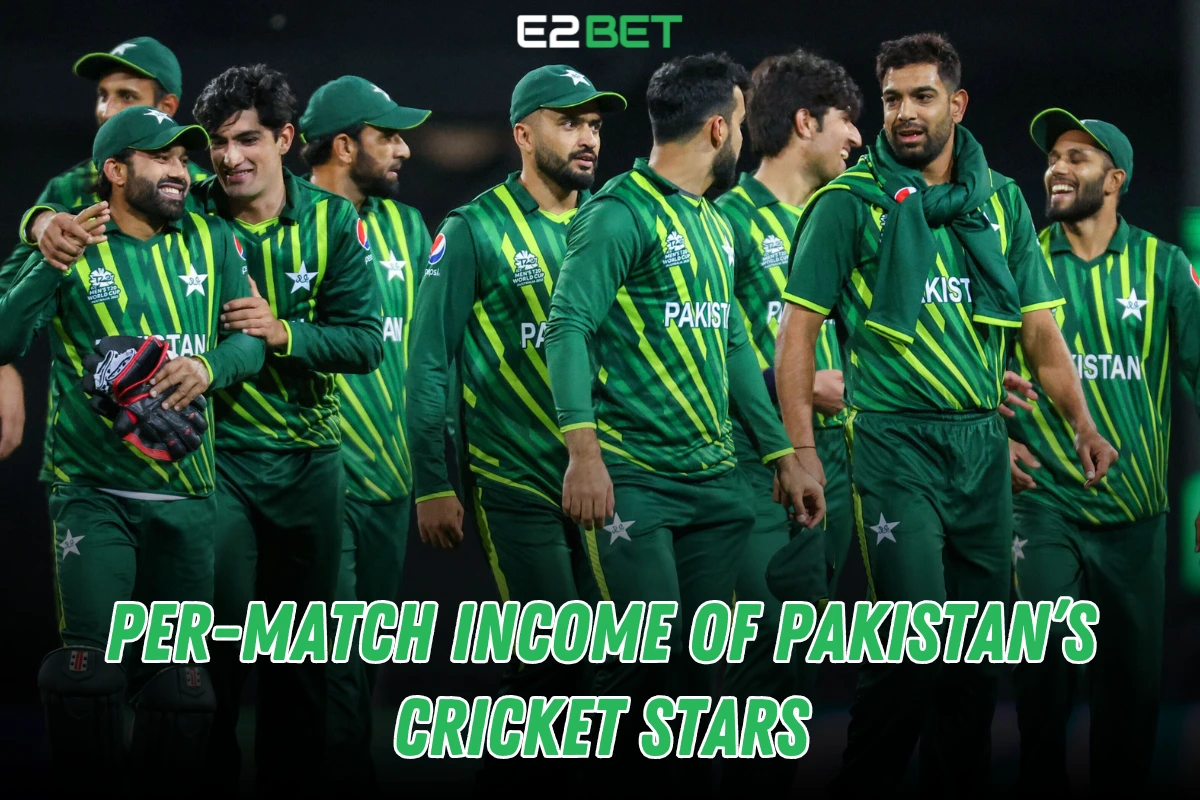Regarding cricket, Pakistan’s stars shine brightly on the global stage. But have you ever wondered how much they earn per match? Pakistan Cricket Stars Income, the income of Pakistani cricketers depends on several factors, including their contract category, match format, and performance. Let’s dive deep into the financial aspects of Pakistan’s cricket players, uncovering details like per-match earnings, bonuses, and the impact of leagues such as the Pakistan Super League (PSL).
Overview of Pakistan’s Cricket Landscape
Cricket is more than just a game in Pakistan—it’s a national passion that unites millions. Over the years, cricket legends like Wasim Akram and Babar Azam have cemented Pakistan’s place in the sport’s history. As the cricket world evolves, so does the income structure for Pakistani players.
The Rise of Professional Cricket in Pakistan
The advent of leagues like the PSL and increased focus on international cricket has boosted the financial opportunities for players. But how exactly does this translate into per-match earnings?

Understanding Player Contracts
The Central Contract System
The Pakistan Cricket Board (PCB) ensures financial stability for its players through the central contract system. These contracts categorize players into tiers—A, B, and C—based on their experience and recent performances.
Categorization of Players (A, B, C)
- Category A: Reserved for top performers like Babar Azam, these players enjoy the highest retainer and per-match fees.
- Category B: Includes consistent contributors who are just below the top tier.
- Category C: Designed for emerging talent and players making a comeback.
Match Fees and Additional Perks
Apart from monthly retainers, players earn match fees that vary based on the format of the game. Bonuses and sponsorship deals further enhance these earnings.
Match Fees Breakdown
Test Matches
In Test cricket, players receive higher compensation for their time and effort. Category A cricketers earn approximately PKR 8–9 lakhs per Test match, making it one of the most rewarding formats.
One Day Internationals (ODIs)
ODIs are another lucrative avenue, offering match fees of PKR 5–6 lakhs for top-tier players. Bonuses for centuries or outstanding bowling performances can further boost their income.
Twenty20 Internationals (T20Is)
T20Is, being shorter in duration, offer around PKR 3–4 lakhs per match for Category A players. While the fees are lower than Tests or ODIs, the frequency of T20 matches makes this format financially rewarding.
Bonuses and Performance-Based Earnings
Bonuses for Centuries and Five-Wicket Hauls
Pakistani players earn additional bonuses for exceptional performances, such as scoring a century or taking a five-wicket haul. These incentives can significantly increase their per-match income.
Additional Incentives for Captains
Cricketers in leadership roles, like Babar Azam, receive extra compensation for their responsibilities, making the captaincy a financially rewarding position.
Sponsorship and Brand Endorsements
The Role of Advertisements in Player Income
Sponsorship deals form a vital part of cricketers’ earnings. Players like Shaheen Afridi and Mohammad Rizwan often endorse top brands from soft drink advertisements to sportswear campaigns.
Popular Brands Endorsed by Pakistani Cricketers
Brands such as Pepsi, Jazz, and Haier are frequently associated with Pakistan’s cricket stars. These endorsements boost a player’s income and enhance their public image.
Comparison with International Cricket Stars
How Pakistani Players Stand in Global Rankings
While Pakistani cricketers earn well, their income often pales compared to players from countries like India or Australia, where cricket generates massive sponsorship revenue.
Factors Influencing Income Disparity
Limited sponsorship opportunities and fewer international league appearances are significant factors behind this disparity. However, the success of the PSL has been a game-changer for many Pakistani players.
Income from Domestic Leagues
The Role of the Pakistan Super League (PSL)
The PSL has revolutionized the financial landscape for cricketers in Pakistan. Top players can earn millions in a single season, with contracts ranging from PKR 20 million to PKR 50 million.
Earning Opportunities in Other Domestic Tournaments
Although not as lucrative as the PSL, tournaments like the Quaid-e-Azam Trophy contribute to a player’s overall income.
Unofficial Sources of Income
Social Media Revenue
Social media platforms like Instagram and YouTube provide additional revenue streams. Players often earn through sponsored posts, ads, and partnerships with brands.
Personal Businesses and Investments
Some cricketers venture into entrepreneurship, investing in businesses that secure their financial future.
Financial Challenges Faced by Pakistani Cricketers
Inconsistent Payments
One of the common issues in Pakistan cricket is delayed payments, particularly at the domestic level.
Issues with the Domestic Cricket Structure
The domestic cricket system needs better financial backing to provide stability for players who don’t make it to the international stage.
Conclusion
The per-match income of Pakistan’s cricket stars varies depending on their contract category, match format, and additional sources of revenue. While top-tier players earn substantial amounts, financial challenges persist for those outside the limelight. As cricket continues to grow in Pakistan, the future looks bright for emerging talent.
FAQs
Q1: What is the average match fee for a Pakistani cricketer?
Ans: Top-tier players earn between PKR 3–9 lakhs per match, depending on the format.
Q2: How does the Pakistan Super League impact player income?
Ans: The PSL significantly boosts player earnings, offering contracts worth millions.
Q3: Are sponsorships significant to a cricketer’s earnings in Pakistan?
Ans: Sponsorships and brand endorsements are crucial to a player’s overall income.
Q4: How do bonuses work in Pakistan cricket?
Ans: Bonuses are awarded for achievements like centuries, five-wicket hauls, and exceptional performances.
Q5: Why is there a disparity in earnings between Pakistani players and international stars?
Ans: Limited sponsorship opportunities and fewer league contracts contribute to the income gap.